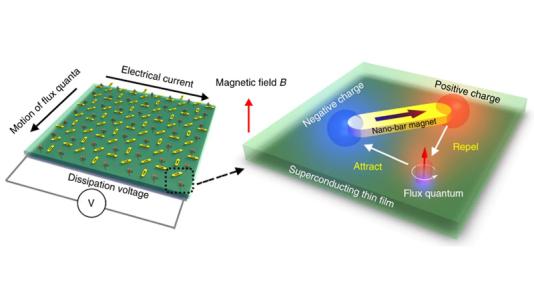
Scientific Achievement
We created a 2D geometrically frustrated flux quanta system which can be deterministically tuned by a reconfigurable artificial spin ice structure.
Significance and Impact
Manipulation of extensive degeneracy in a novel 2D flux-quanta system leads to the first application of artificial spin-ice in the form of a tunable superconducting critical current and a flux-quantum rectifier.
Research Details
- Designed a new hetero-structure consisting of a reconfigurable, magnetic-charge-ice structure on top of a superconducting thin film.
- Geometric frustration can be transformed into a variety of crystallized states with different symmetries using an in-plane magnetic field.
Argonne National Laboratory seeks solutions to pressing national problems in science and technology. The nation’s first national laboratory, Argonne conducts leading-edge basic and applied scientific research in virtually every scientific discipline. Argonne researchers work closely with researchers from hundreds of companies, universities, and federal, state and municipal agencies to help them solve their specific problems, advance America’s scientific leadership and prepare the nation for a better future. With employees from more than 60 nations, Argonne is managed by UChicago Argonne, LLC for the U.S. Department of Energy’s Office of Science.
The U.S. Department of Energy’s Office of Science is the single largest supporter of basic research in the physical sciences in the United States and is working to address some of the most pressing challenges of our time. For more information, visit https://energy.gov/science.